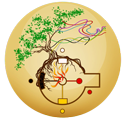Is the Kiva a festival? What does ceremony mean and how do I deal with it?
These and similar questions reach us directly or sometimes only when asked in a conversation.
In order to get to the bottom of it all, I (Tobias) ask Isharia these collected questions and I am very happy that she is taking the time.
Isharia is connected with the Roots of the Earth family for a very long time and has had the opportunity to learn from many elders.
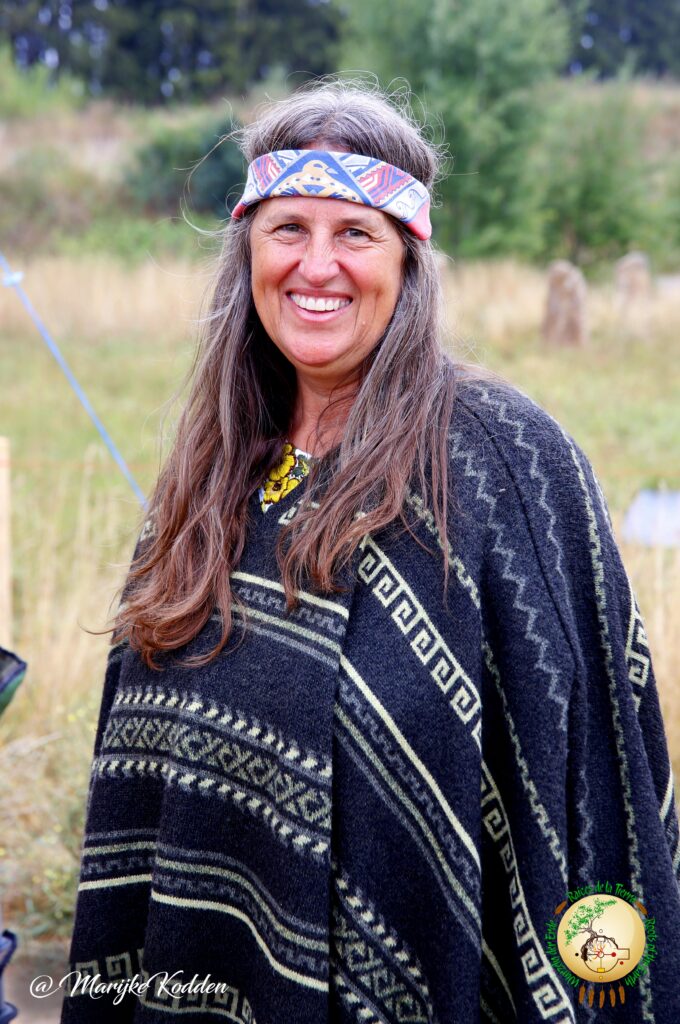
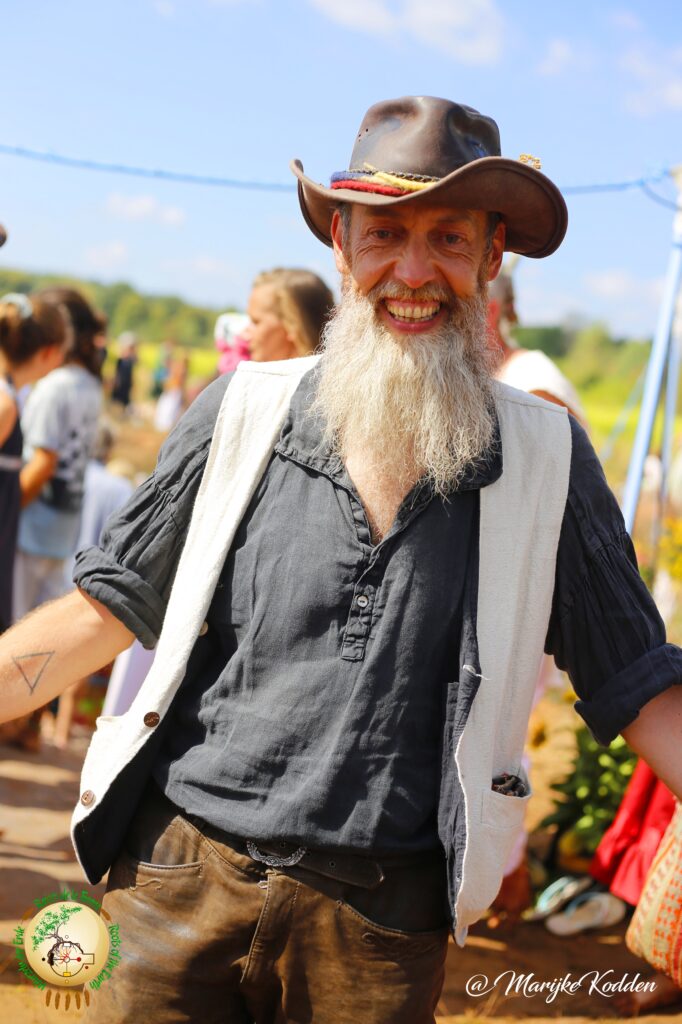
In recent years, she has accompanied the moon women in particular at the Kiva ceremony and helped them to deal with the powers of the ceremony. With this and through her own path of connection to nature and in communication with the great spirit and its messengers, mother earth and the natural beings, she will go to the Kiva for prayer in this year 2023 as one of our elders.
- What is the difference between a festival and a ceremony?
- The alignment in the ceremony
- How do I prepare for a ceremony?
- Ceremonies should not be mixed
- The Kiva fire protects us
- The importance of the altars
- Allow time to integrate after the ceremony
- With the help of the ceremonies we participate in the creation of a positive and loving future.
– What is the difference between a festival or ceremony?
Tobias:
Thank you very much for taking the time for this interview.
In the first year 2021 we were all so fulfilled and carried by the spirits and beings who where with us. We all in the team and all participants just floated through, happy to be able to carry out the Kiva ceremony. Things looked a little different in the second year; spiritual and energetic questions have arisen and now need to be answered.
Before we go into the ceremony, in all its power and energy; my first question:
What distinguishes the Kiva ceremony from a spiritual festival over its four days?
Isharia:
A festival is a big celebration with many offers, where you can usually drift from one to the other. Here, enjoying life is mostly in the foreground and we are more outward-looking.
A ceremony is a great prayer on which everything is centered and aligned.
Our attitude is centered on the inside and we usually go into the ceremony with a certain intention.
The Kiva ceremony in its four days is a great prayer for the earth. It starts with lighting the sweat lodge fire on the first morning. Then with the opening of the Kiva and the subsequent connection of the elders with the kiva fire, the energy rises over three days. The Kiva fire is the center of prayer and energy. In the night of the fourth day, the energy rises into heaven and the spiritual world. Only when the elders complete the ceremony and sever their connection to the fire on the fourth day does the Kiva ceremony end.
This power is maintained by the ceremony leader Heriberto & his wife Nubia, by all the elders and by the organizing team on site.
– The alignment in the ceremony
Tobias:
Let me stop by this, what exactly do you mean by terms like attitude, intention or orientation?
Isharia:
I can approach a ceremony with many orientations, such as the intention to ask for healing for myself or a loved one, to find one’s own purpose in life, to pray and work for Mother Earth, the purity of the elements, for humanity and much more . In the Kiva Ceremony, the focus is on healing Mother Earth as Tigre saw in his vision.
Focusing on prayer and a clear intention will center you within. It gives you a good footing in the ceremony, good bearing, and you won’t be easily distracted. It is always nice to experience when people have a good inner balance and continue to surpass themselves during the ceremony.
Ever since I started this path, I’ve been practicing putting the personality back for the ceremony and going into service. When we are paying attention, it is often through silent observation that we can learn the most in the ceremony. Prayer is also a protection in the ceremony, because through it we connect with the heavenly forces. When we emit a “light,” a blessing of light, through our prayer, we are blessed and automatically protected.
– How do I prepare for a ceremony?
Tobias:
Ok I understand. What can we and also participants who will be there for the first time do or refrain from preparing to arrive focused on the ceremony? For me personally, the intention in the Kiva ceremony is very clearly aimed at healing for Mother Earth, which in turn is reinforced by the shared prayer and shared prayer.
For me, the Kiva Ceremony – at least here in Europe and “these days” – is also a witnessing-ceremony that has an effect well beyond the four days of each individual participant. By witnessing-ceremony I mean that through the participation of each individual, the effect of healing for Mother Earth is multiplied again in storytelling (that’s how I experience it) and in doing.
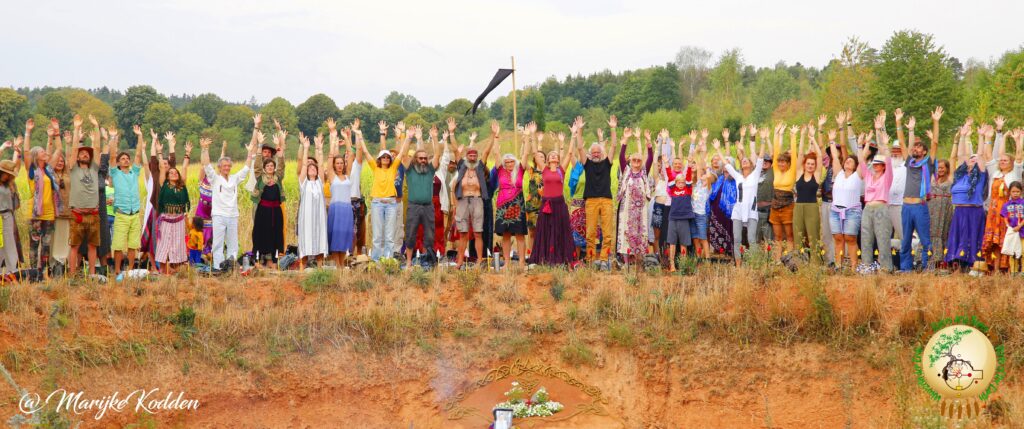
Isharia:
To be honest, I don’t know the term witnessing-ceremony, it’s new to me.
Basically, the more people come together for prayer, the more the energy increases and this light field continues to work in the collective, via the morphogenetic field and in our hearts. When we tell other people about it, sparks of what we have experienced jump over into their hearts and so the energy increases, as you said so beautifully.
Tobias:
That’s exactly what I mean by witnessing-ceremony, I haven’t found a better term for myself until now.
Isharia:
Let’s talk about the preparation. Being well prepared is always important; whether for the Kiva ceremony, the sweat lodge or any other ceremony. Every powerful ceremony builds up days before it begins and continues to have an effect for several days. For a big ceremony like the Kiva it is for me – probably for you too – the whole year of preparation and in any case a few weeks of intensive work and a good two weeks of after-effects.
A valuable preparation for all of us and also to strengthen our intention can be that we abstain from alcohol, drugs and sex four days before and after the Kiva ceremony and of course especially during the Kiva ceremony.
With this, and also through our participation in the preparation, we show the spiritual world that our intentions are important to us and that we are willing to make a sacrifice for them. In this way we strengthen our intention and receive all the more support from the spiritual world. The Kogis give “Pagamientos”, the Maya give a “Tooj”, a compensation, an offering for the desired help from the spiritual world. Our cooperation and a waiver can be a gift, a gift, a compensation.
Often enough this is “set down” as a rule, but they are not prohibitions, as is sometimes wrongly understood, but help us to leave the ceremony safe and with the best result. They are signposts that help us to ensure that our concerns are heard by the spirit world and that we receive an answer and are also able to perceive it. This is how we get the best out of the ceremony for ourselves and for “all our relatives”.
One reason why you should avoid sex during this time is so that we don’t mix energetically, but are completely with ourselves. The more we are well centered and focused on prayer, the more poise we have in the ceremony. This in turn protects us.
The cooperation in the preparation, for example, you and I and many others are on site days before and busy with the Kiva organization months before, shows the spiritual world that we care a lot about our intention and orientation and that we are willing to make sacrifices bring to. It is a special pleasure and honor for us to be able to work with the hundreds of participants as part of the Kiva ceremony.
A good way to prepare throughout the year is to go to the sweat lodge regularly. This is a good place to cleanse and recharge, but also to learn how to do ceremonies. Of course I can’t speak for all sweat lodges, their fires and their keepers, but most of the time you are welcome to ask questions or to ask for support, to participate in the work and to gain experience. Talk to the local fire keepers.
There are now some sweat lodge fires in Germany that are connected to the Kiva fire; everyone is welcome here.
The regular sweat lodge also helps many to keep in touch with the Kiva family in order to stay energized throughout the year.
Tobias:
As the responsible technical organizer, I must briefly add at this point that alcohol and drugs are actually prohibited.
Isharia:
Yes, thank you Tobias, that is an important point. It is something else when elders consciously work with the so-called “teacher plants” in the ceremony.
– Ceremonies should not be mixed
Tobias:
One more issue I would like to address, why shouldn’t other ceremonies take place during the Kiva Ceremony?
Apart from the time factor in the days, with two sweat lodges, two Kiva ceremonies, the meals and the time together in the camp and there the sharings of the elders. Where is the space, strength and energy for such beautiful ceremonies as with Mama Cacao, all the drum, soul and other journeys, to name just a few.
And a few hours of sleep helps, too, I’ve been told ……
Isharia:
Within a ceremony we should not perform other ceremonies. It is not advisable to mix different ceremonies. This can be too much or create confusion within us.
We have to remember that every ceremony also has an effect on us. Issues surface, become conscious and find the opportunity for transformation and healing in the ceremony. We experience a lot on the inner level as well as on the outside and learn new ways and wisdom from the elders. All of this needs to be digested and integrated. So we should take our time before and after and take good care of ourselves.
Helmut (Director Team Roots of the Earth Germany) is a nice reminder that everything we do during the Kiva Days should be aligned with the Kiva Ceremony and prayer for Mother Earth. Whether we cut wood, cook or cut vegetables, everything is a service for a good togetherness and a good success of the ceremony. The more we are aware of being a fire, a circle of people and a common prayer, the more powerful the ceremony becomes. So let’s judge and judge less and come together more as a family and embrace the many gifts that each of us brings to the circle. Let us anchor the love for all life again in us and live together.
– The Kiva fire protects us
Tobias:
Another question; not everyone has your experience in dealing with ceremonies, including me. I know and we do a lot to keep the space, as it’s commonly called; so – I think – we are certainly also protecting the people around us. Even those who may be distracted or just overwhelmed. Is that enough?
Isharia:
By the fire we are protected. As soon as and as long as the fire in the sweat lodge place, in the kiva and also the social fire and the fire in the kitchen are burning, we are in a sacred field and in the shelter of the ceremony. When the ceremony is over and the fire goes out, this energetic shelter dissolves. This is actually a tricky moment as all the energies in place that have been kept out and away from us by the protective energy outside want to come back and take the space back with them. Therefore we leave the place of the ceremony as soon as possible as soon as everything is dismantled.
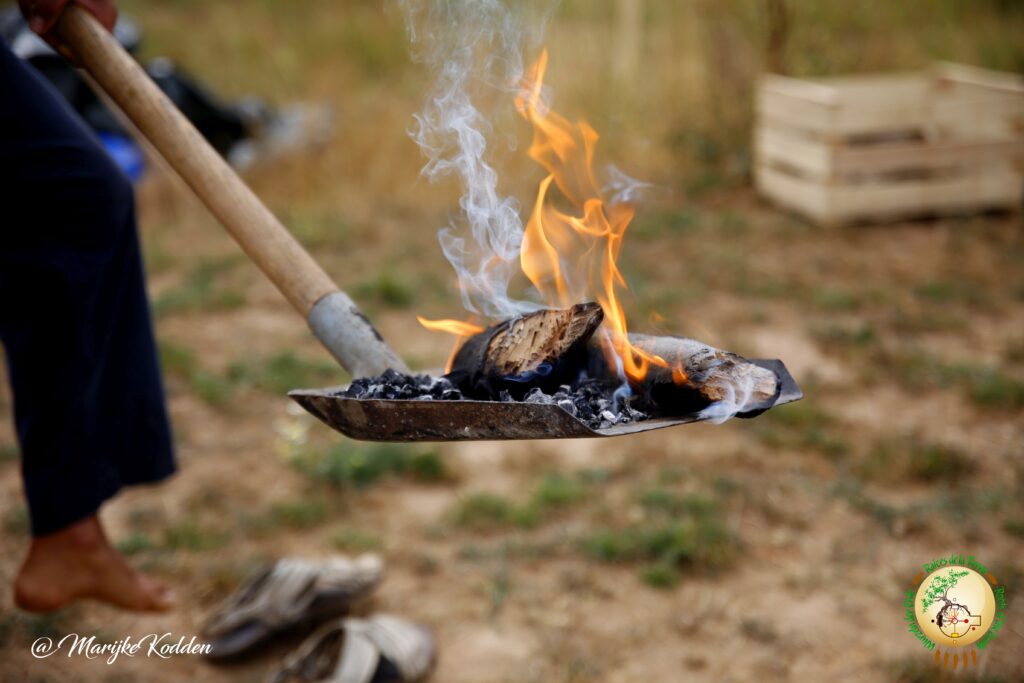
Incidentally, the focus on fire in the ceremony is not to be understood as a focus on the element of fire, but fire is the portal to the spiritual world. Fire is the element that can most quickly transport our prayers to the Great Spirit. We communicate through fire with the Creator and his helpers, and he communicates with us through fire. It serves as a portal. Our elder Dayu (Note: Ida Ayu Purnamawati, from Bali) once said: “Fire is the extended tongue of God.” – the mouthpiece of God. Fire has performed this task wonderfully since there have been ceremonies among mankind.
– The importance of the altars
The altar is the place on earth that serves as a landing place for the energies, the messages and the helpers of the Great Spirit. Here we place our offerings of thanksgiving and requests and receive answers and help. As soon as an altar is activated, there is a lively exchange between heaven and earth, between God and man, between the helpers of the Great Spirit and the elders. So with all your concerns, with all your prayers, with all your problems, focus on the altar and the fire in the center and put it there in the fire, if possible with a pinch of tobacco, with a piece of wood or spiritually in yours Performance.
This applies to every ceremony and therefore to every altar and fire.
Go consciously into the sweat lodge with your concerns. Here you can surrender everything to the elements, breathe your pains and worries to the stones in the middle into the fire. The sweat lodge is where we surrender everything to the elements. They help us to transform the issues, memories and emotions that arise in us and to bring us back into balance. I remember a saying of the elders in the Temascal and also in the vision quest, who said again and again: “If you are not feeling well, “Pray harder”.
– Allow time to integrate after the ceremony
Tobias:
Thank you, that was very insightful. Before we come to the end, please let us talk again about the time after a ceremony, especially of course the Kiva Ceremony 2023, the third ceremony in Germany.
What can you tell the participants for the time after the Kiva?
Isharia:
A good point you raise. After the last kiva, an issue came up strongly. Questions came from several people, “What do I do if I don’t feel well after the Kiva ceremony? Whom can I contact?”
I think in most cases we go home from the ceremony full of energy and joy. However, it can happen that inner processes have opened up that are not yet completed.
First and foremost, we are always available in the core organizational team, you will certainly forward any inquiries that come up. Helmut (Director Team Roots of the Earth Germany) is always available. You can also contact any available elders at any time if you have problems.
Many felt that they came home very open, deeply touched by the impressions of the Kiva, enthusiastic about the open-hearted treatment within the Kiva family and had to go straight to work or to fields and situations where there was a different approach and you often serves more of a cause and money than life. Even the hustle and bustle of everyday life that we are all familiar with, with work, family and school and everything that goes with it – and it is part of it and it is a good thing – is then too much at once. This discrepancy is often difficult to endure after such a beautiful and intense shared experience.
It is important that we are aware of how much we tune into higher and higher energies in such strong ceremonies and, at best, plan a vacation for the next kiva afterwards in order to give the transition – the landing after the ceremony – time and space . It also takes time to integrate the intensive impressions and the conscious and unconscious experiences. It’s the same for us old hands. We’re happy to keep a week off after that.
If that is not possible, I advise everyone to take at least a short, maybe an hour, time for themselves in the days following the Kiva Ceremony, an opportunity to process what has happened; if there is a sweat lodge fire in your area, this is also a good option.
– With the help of the ceremonies we participate in the creation of a positive and loving future.
Tobias:
Dear Isharia, thank you very much for your time and the many explanations, hints and tips.
Let me add that this year during Kiva we will also have a team that attendees can turn to for more emotional questions.
Is there anything else you would like to convey to people?
Isharia:
Yes gladly. Remember, with the ceremonies we create a good future.
Even if the changes between times in loving space with hearts so wide open in ceremony and fellowship, filled with the deeply nourishing wisdom of the elders and the spaces of everyday life are not easy, we can gratefully remember that we also create a more loving future in the ceremonies.
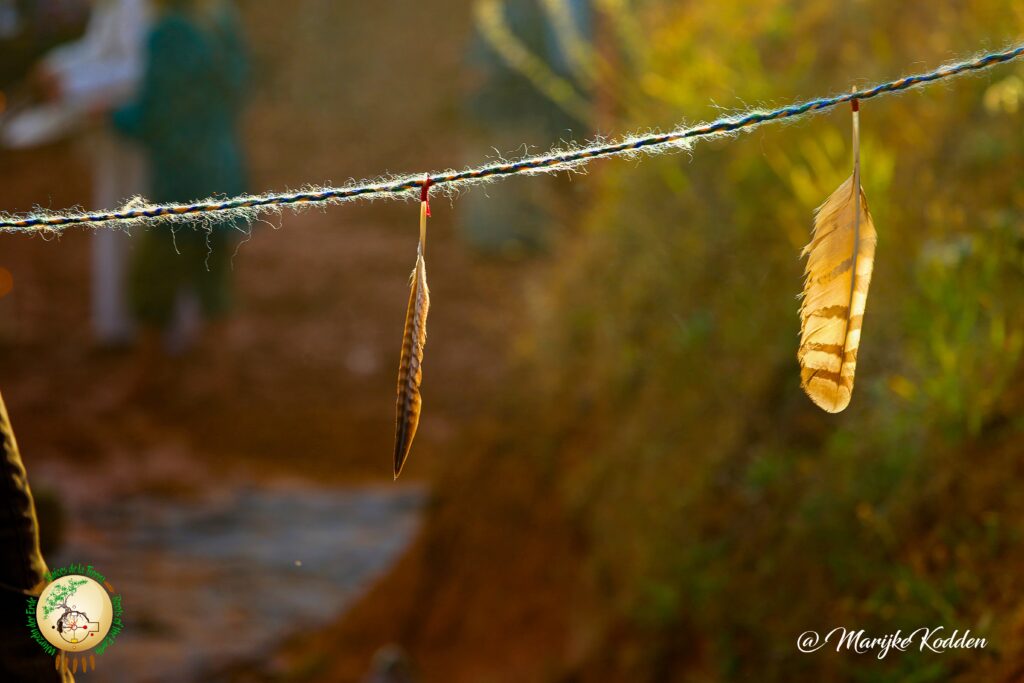
Much is healed and sorted and much gets a new direction.
All the love energy that we create in the days of the Kiva ceremony lives on in our hearts and flows with the waters, with the wind and via the energy channels of the earth through the country to many places, people and beings on this earth. The Kiva ceremony is like an acupuncture for the country where it takes place.
And the seeds that have been sown and planted in the hearts will sprout and fill us and our children with much joy in the future.
We help direct the paths of humanity in a better direction of life and love.
Aho Metakue Oyassin – to all our relatives
Tobias:
All I have left is a corroborating “Aye”.

